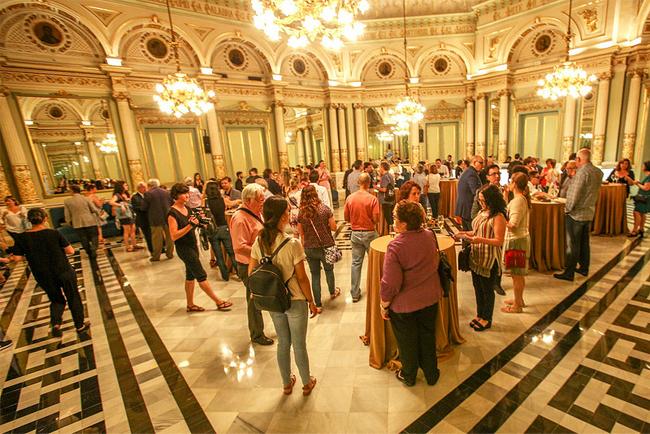Online bookings
24 hours a day
0044 (0) 20 3239 1595
English Phone
Mon-Fri: 8-16:00 GMT
Customer Service
The Liceu Theater is just one of the many attractions that can be found on Barcelona's La Rambla, located right by the exit from the Liceu Metro stop on the Green Line L3. This is a Theater that specializes in opera and came into being as a training venue for young students who were passionate about music and still gathers together hundreds of people today who are still passionate about the cultural lifeblood of the Catalan capital.

Barcelona's Liceu Theater was built between 1845 and 1847 but its history dates further back in time. In fact, the foundation was established in 1837 in order to promote a musical education (which is where its name of "the Lyceum" originated from) and to organize performances of musical works by the theater's students. As an initial venue in which to hold these musical events, a small theater was built in a convent on La Rambla but subsequently, at the desire of the nuns who gave up their ownership of the convent and due to a lack of space, the theater held its last performance on the 8th October, 1844. The director of the Liceu commissioned the businessman Joaquim de Gispert d'Anglí to plan the construction of a new building which, unlike most European theaters, was financed by the public and not by royalty. This is the reason why still today, there is no Royal Box at the Liceu Theater. In return, because of the funding that was invested in the project, some of the important local families reserved spaces within the building in which to set up shops and a private circle which was called the "Liceu's Circle." The Liceu Theater was built by the architect Miguel Garriga i Roca and was inaugurated on the 1st April, 1847.
Until 1861, everything went well: the works that were performed in the theater were those of the Italian composers such as Bellini, Rossini, Donizetti, Verdi and Mercadante, as well as plenty of Spanish and Catalan artists.
However, in 1861, the theater suffered severe damage as the result of a fire and was rebuilt by the architect Josep Oriol Mestres; two years later, precisely during a performance of Rossini's William Tell, two bombs were detonated by the anarchist Santiago Salvador: only one actually exploded but this resulted in the deaths of some twenty people. This event shocked the city, so much so that for several years, the seats that belonged to the victims were never used, until the theater was reopened in 1864.
The 1900's were prosperous years for the theater which was able to welcome famous opera and ballet companies from all over the world. Subsequently, there was a period of instability due to the Spanish Civil War (which is explained at the Museo d'Història de Catalunya), but from 1940 to 1980, the theater reverted to its original splendor thanks to the German operas.
In 1980, the government of Catalonia set up a consortium for the theater's administration which improved the quality and raised the standards of artistic participation, turning it into one of the most prestigious opera houses in Europe. On the 31st January 1994, the building suffered another fire which was caused by a technical fault and until it reopened again (in 1999), performances were moved to the Palau Sant Jordi, the Palau de la Música Catalana and to the Victoria Theater.
Nowadays, the theater's program includes opera, concerts and shows for the whole family and the dates for performances are spread across weekdays and weekends. The price of an entry ticket varies from €10.00 to €350.00 depending on the seats and the type of performance. Apart from the performances, it is also possible to visit the theater and admire its wonderful historic vestibule, the concert hall and the hall of mirrors and the so-called Foyer.
My comments